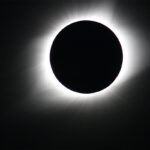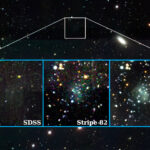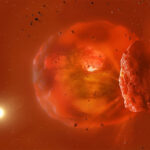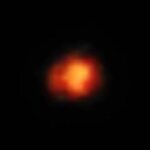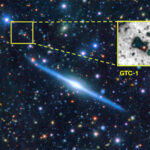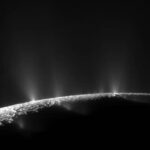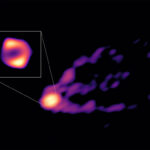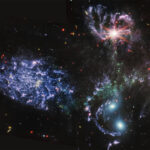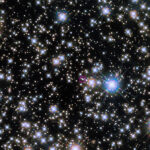Most massive stellar black hole in our galaxy found
Astronomers have identified the most massive stellar black hole yet discovered in the Milky Way galaxy. This black hole was spotted in data from the European Space Agency’s Gaia mission because it imposes an odd ‘wobbling’ motion on the companion star orbiting it. Data from the European Southern Observatory’s Very…
2024 Total Solar Eclipse: Through the Eyes of NASA
A view of the Aug. 21, 2017, total solar eclipse from Madras, Oregon. Credits: NASA/Gopalswamy. Today, April 8, 2024, a total solar eclipse will cross North America, passing over Mexico, the United States, and Canada. The first location in continental North America that will experience totality is Mexico’s Pacific coast…
Nube, the almost invisible galaxy which challenges the dark matter model
A group of astrophysicists led by Mireia Montes, a researcher at the Instituto de Astrofísica de Canarias (IAC), has discovered the largest and most diffuse galaxy recorded until now. The study has been published in the journal Astronomy & Astrophysics, and has used data taken with the Gran Telescopio Canarias…
Researchers capture first-ever afterglow of huge planetary collision in outer space
A chance social media post by an eagle-eyed amateur astronomer sparked the discovery of an explosive collision between two giant planets, which crashed into each other in a distant space system 1,800 light years away from planet Earth. Image shows a visualisation of the huge, glowing planetary body produced by…
The James Webb observes the first galaxies in the universe and discovers and “impostor”
An international study, carried out by the James Webb Space Telescope (JWST) in which the Instituto de Astrofísica de Canarias (IAC) has participated, shows that the universe could produce extremely luminous galaxies at very early epochs, when it was only some 3% of its present age. This result implies that…
Grantecan solves an old puzzle about the brightness of galaxy discs
An international scientific team, including the Instituto de Astrofísica de Canarias (IAC), has detected distortions in the brightness of a galaxy's disc that could be explained by the gravitational effect of an unknown neighbouring galaxy. Named GTC-1, the satellite galaxy was discovered using ultra-deep images obtained with the OSIRIS camera of the…
NASA Cassini Data Reveals Building Block for Life in Enceladus’ Ocean
Using data collected by NASA’s Cassini mission, an international team of scientists has discovered phosphorus – an essential chemical element for life – locked inside salt-rich ice grains ejected into space from Enceladus. The icy crust at the south pole of Enceladus exhibits large fissures that allow water from the…
First direct image of a black hole expelling a powerful jet
For the first time, astronomers have observed, in the same image, the shadow of the black hole at the centre of the galaxy Messier 87 (M87) and the powerful jet expelled from it. The observations were done in 2018 with telescopes from the Global Millimetre VLBI Array (GMVA), the Atacama…
New map of the universe’s cosmic growth supports Einstein’s theory of gravity
For millennia, humans have been fascinated by the mysteries of the cosmos. Unlike ancient philosophers imagining the universe’s origins, modern cosmologists use quantitative tools to gain insights into its evolution and structure. Modern cosmology dates back to the early 20th century, with the development of Albert Einstein’s theory of general…
NASA Missions Study What May Be a 1-In-10,000-Year Gamma-ray Burst
On Sunday, Oct. 9, 2022, a pulse of intense radiation swept through the solar system so exceptional that astronomers quickly dubbed it the BOAT – the brightest of all time. The source was a gamma-ray burst (GRB), the most powerful class of explosions in the universe. The Hubble Space Telescope’s…


